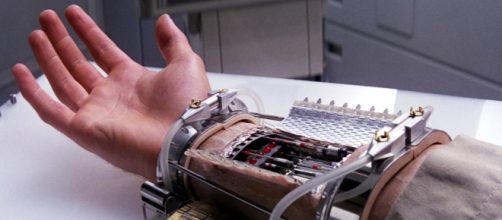Science and technology have improved at a steady pace, but no one will deny that there’s still plenty of work that needs to be done. Problems plague men and women across the board, and sometimes it feels as if the only solutions are the stuff of science fiction. Luckily, some researchers and engineers have opted to turn the unreal into the real – which includes such seminal works like the Star Wars movies. In fact, some of that technology might show up sooner rather than later.
In The Empire Strikes Back, the young Jedi Luke Skywalker faces Darth Vader in a lightsaber duel – and as a result, ends up losing an arm in a brutal clash.
But instead of being horrified by it, engineer Benjamin Tee saw the prospects that could follow. In the movies, Luke returned to the fight against the Empire with a prosthetic arm as good as the real thing; as a Star Wars fan, Tee decided to take that technology and recreate it in the real world. Thanks to his efforts and his team at the Agency for Science Technology and Research in Singapore, he may soon succeed.
A new hope for prosthetics
One of the problems with prosthetics is that, up to this point, there have only been minor steps toward recreating a lost sense of touch. As such, amputees and the paralyzed have been denied both a key part of the human experience as well as the chance to fully control their new limbs.
The solution to that, potentially, isn’t necessarily to make better arms or legs; it’s to improve the coating that surrounds them. To that end, the testing and development of the DiTact – Digital Tactile System – has begun.
The plan is to have the DiTact employed as an artificial layer of skin. Its inner workings, in theory, create a good copy of the genuine article. Its top layer houses pyramid-shaped sensors that press down on carbon nanotubes when something touches the material; in turn, an electrical current flows through an oscillator to send out pulses – the same sort of pulses that normal skin releases. In the tests run so far, the DiTact has been shown to react to – and cause responses in – the mouse neurons produced in petri dishes.
It remains to be seen how well the material works on human neurons or the prosthetic to be attached to an actual body, but it’s a promising step forward.
To be fair, the DiTact isn’t the only attempt at creating artificial skin that recreates a sense of touch. But the material is much more efficient and effective than those from the past; previous attempts used pure electrical currents that had to go through additional steps to activate neurons. The DiTact has no such issue, and as a result can work with much less energy and much fewer steps. While Tee admits that there’s still work to be done – giving the DiTact the ability to detect temperatures, for one – the efforts so far have helped turn props from movies into godsends for the people.

